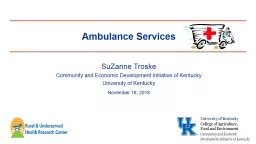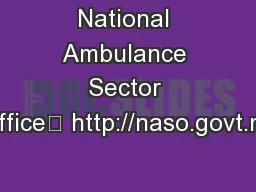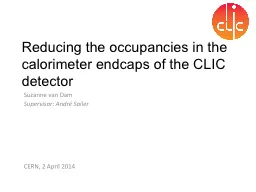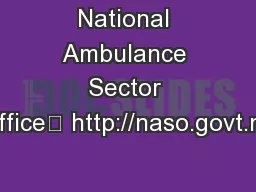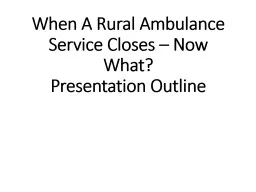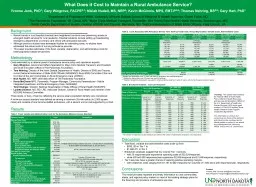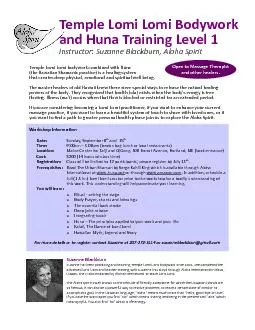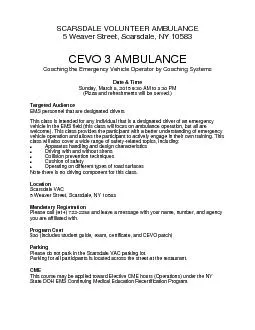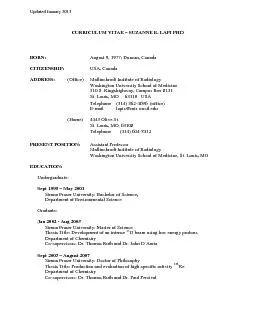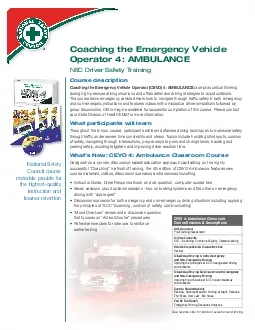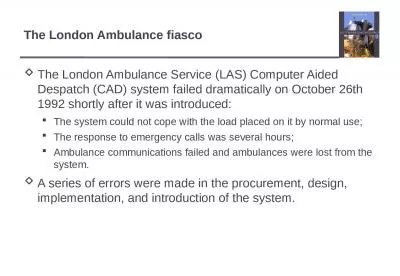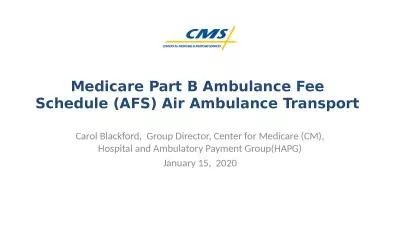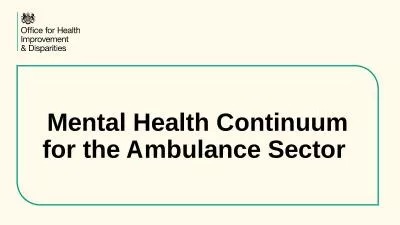PPT-Ambulance Services SuZanne Troske
Author : oconnor | Published Date : 2022-02-14
Community and Economic Development Initiative of Kentucky University of Kentucky November 16 2018 Ambulance Research At CEDIK we have three studies of ambulance
Presentation Embed Code
Download Presentation
Download Presentation The PPT/PDF document "Ambulance Services SuZanne Troske" is the property of its rightful owner. Permission is granted to download and print the materials on this website for personal, non-commercial use only, and to display it on your personal computer provided you do not modify the materials and that you retain all copyright notices contained in the materials. By downloading content from our website, you accept the terms of this agreement.
Ambulance Services SuZanne Troske: Transcript
Download Rules Of Document
"Ambulance Services SuZanne Troske"The content belongs to its owner. You may download and print it for personal use, without modification, and keep all copyright notices. By downloading, you agree to these terms.
Related Documents

